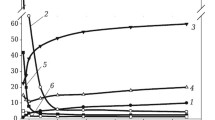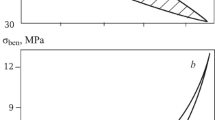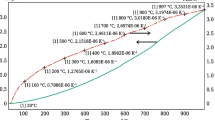Abstract
The results of studying the variations in the main physicotechnical properties of clay-silicon carbide refractories, which are produced on the basis of broken silicon carbide plates by the slip casting method, after multiple heating and chilling are considered. The resulting refractories are recommended for use as refractory stacks and saggers in the production of fine ceramics.
Similar content being viewed by others
REFERENCES
I. A. Bulavin, Technology of Porcelain and Faience Production [in Russian], Legkaya Industria, Moscow (1975).
I. I. Moroz, Technology of Porcelain and Faience Products [in Russian], Stroiizdat, Moscow (1984).
B. S. Skidan, P. V. Sivov, R. S. Guralova, and V. P. Sivov,“Heatresistant saggers produced by slip casting,” Steklo Keram., No. 10, 11–14 (1999).
V. P. Sivov, V. M. Loginov, and P. V. Sivov,“The effect of finedisperse slip on the ma in properties of refractory articles used in firing fine ceramics,” Ogneup. Tekh. Keram., No. 3, 42–46 (2000).
Author information
Authors and Affiliations
Rights and permissions
About this article
Cite this article
Sivov, V.P. Clay-Silicon Carbide Refractories Based on Technogenic Materials Produced by Slip Casting. Glass and Ceramics 58, 322–325 (2001). https://doi.org/10.1023/A:1013991227805
Issue Date:
DOI: https://doi.org/10.1023/A:1013991227805




